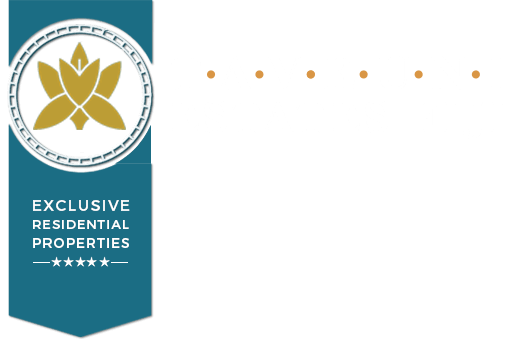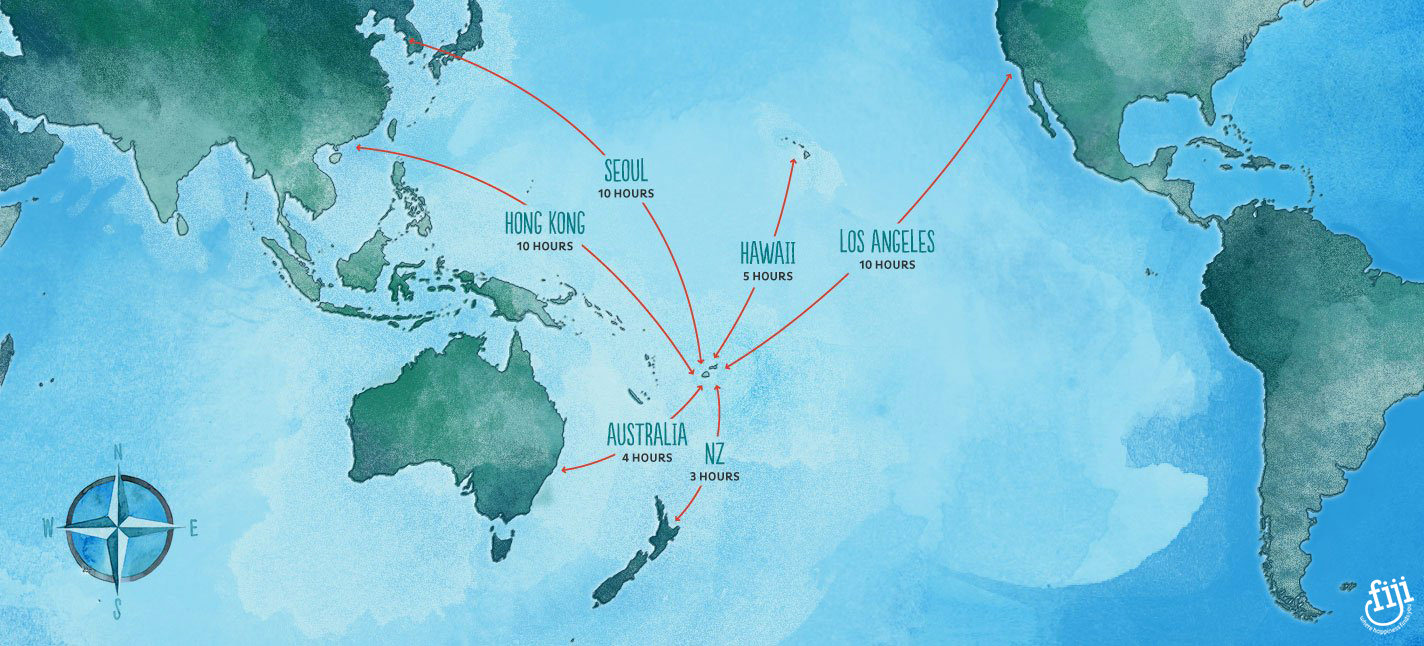
FIJI
A glittering necklace of jewels in the heart of the Pacific Ocean, Fiji is an unspoiled tropical paradise, blessed with lush forests, breathtaking beaches and brilliant crystal clear waters.
There is no place on earth quite as beautiful.
The Republic of Fiji
The Fiji archipelago lies in the southern Pacific Ocean and is part of the Oceania landmass. Fiji lies approximately 3100 km northeast of Sydney, Australia, and 5000 km southwest of Honolulu, Hawaii.
Islands
Fiji consists of over 300 islands (18 270 km2 of land in total) of which only 120 are inhabited. Approximately 80% of all private land here is owned by indigenous Fijians.
The three largest and most populated of the islands are…
- Viti Levu is the largest island, and the capital Suva is situated here.
- Vanua Levu is the second-largest
- Taveuni Island – The ‘garden island’ – is the third largest island, and the home of Taveuni Estates. Taveuni Island lies approximately 140km from Viti Levu.
Fiji declared its independence in 1970, after a century as a British Colony. The population is almost 60% indigenous Fijians and Indo-Fijians, descendants of plantation workers brought by the British 35%. The balance of Fijians is a mixture of Chinese, European and other races. The resulting culture is strongly influenced by all sectors of society from the heady spices used in much of the food to the traditional religious beliefs, Christian, Hindu, Muslim and Buddhist. All citizens are referred to as FIJIANS.
Almost 65% of land in Fiji consists of lush forest. The archipelago’s main economic resources include sugar, timber and tourism, Mineral resources, light manufacturing and the export of the world famous mineral water “Fiji Water”
LOCAL PHRASES
Hello: “Bula”
Goodbye: “Moce”
Good morning: “Yadra”
Please: “Yalo vee naka”
Thank you very much: “Vinaka”
Excuse me: “Tulou”
Yes: “Io”
No: “Sega”, pronounced “Senga”

Island style
Is Fiji all blue lagoons, turquoise waters and untouched coral reefs? It is, and so much more!
Fiji enjoys a typically tropical climate with lows of 25° and highs of 30° depending on the season.
The islands are the result of volcanic activity in the area millions of years ago. This accounts for the dramatic mountainscapes on the larger islands as well as the abundance of fertile soil – the lifeblood of the lush tropical forests and much of the sustainable agriculture practised in the region.
With most of the population based on the main island of Viti Levu, many visitors opt to get away from it all and experience a taste of more traditional Fijian life on an outer island.Traditionally visitors will stay at small resorts with established infrastructures for paying guests.
Many foreigners are now opting to put down roots in the region with developments likeTaveuni Estates catering for this market.
Flora & fauna
For bird and animal lovers, Fiji is a veritable paradise both above and below the water. Rich in plant (there are over 450 indigenous flora species) and bird life, Fiji is a nirvana for eco-tourists and intrepid explorers alike.
There are approximately one hundred species of birds as well as elusive creatures such as the rare Fijian Crested Iguana.
Teeming with beautifully coloured triopical fish, the soft coral reefs in Fiji are regarded as unrivalled almost anywhere in the world by dive enthusiasts, who often make an annual pilgrimage to this underwater mecca.
Game fish are widespread here and fish such as Marlin, Barracuda, Sailfish and Wahoo are in abundance.
Escape to Eden
Those who’d like to combine a visit to this virtual garden of Eden with some cultural input are in good hands.
A warm local welcome
Distance from a world of consumerism and neon lights have left many Fijians with a warm and welcoming attitude to foreigners, especially in the farther-flung areas of the archipelago, leaving an ever lasting impression on visitors.
Slice of culture
Traditional dance (meke in Fijian) and song are an integral part of Fijian culture. Meke are usually narratives of some important event and rest on strong oral tradition. Many have been passed down from one generation to the next, through a rich oral tradition. Today the tradition is still very much alive and meke are usually performed on special occasions and sometimes even for competition.
Each part of Fiji has its own distinct dialect and dance.The graceful movements of women performing a fan dance and the imposing, fierce actions of the men performing a war dance are both memorable sights to behold.
Drink of the gods
Kava or yaqona is a central part of the Fijian culture and is the national drink used in ceremonies of welcome, weddings, funerals and other important occasions such as the installation of a chief.
Nowadays Kava is drunk socially, on a daily basis, and no visit to Fiji is complete without taking part in the yaqona-drinking tradition with some friendly locals.
Living the dream
Fiji offers visitors a chance to get away from the rat race once and for all.
Brilliant white beaches, crystalline Pacific waters and enough gorgeous sunsets to last a lifetime may well tempt the visitor to stay in paradise forever.
Fiji Facts
Visas
Most travellers to Fiji are automatically granted a four-week tourist visa on arrival. This includes travellers from most Commonwealth countries, most of North, South and the Central Americas as well as Western Europe, Israel and Japan. A current passport valid for at least six months from the date of entry is required to enter Fiji.
Currency
The official currency of Fiji is the Fijian Dollar (FJD). 1$USD is approximately 2 FJD. All major credit cards are generally accepted in Fiji and travelers cheques can be exchanged at banks and exchange houses in the major centers.
Language
English is the official language, with Fijian and Hindustani as the most spoken tongues there after.
Inoculations
The area is free of tropical diseases such as malaria and inoculations are not required.
Time zone
Fiji time is 12 hours ahead of Greenwich Mean Time.
Population
The latest census counted just under 1 million citizens*. According to a survey almost 60% of the population is native Fijian, 35% Indian and the remainder are a mix of Chinese, Pacific Islanders and Europeans. 60% of the population is Christian, 38% Hindu, 8% Muslim (2% unaccounted for).
Food
67% of the labour force is involved in sustainable agriculture, providing most of their own food. Local delicacies include coconut pancakes and sweet banana juice.
Electricity
240V, 50Hz
Getting there and away
A number of Fijian domestic air carriers provide service to smaller islands from Viti Levu.
Getting around
Fiji drives on the left side of the road. Hertz, Avis, Budget, Thrifty and locally-owned rental car companies are represented at all major centres. Taxis are plentiful and travel is cheap and enjoyable aboard open-air buses. Ferries operate from Viti Levu to many of the outer islands. A current driver’s license from your country of residence or an international driving permit is all that is needed to drive in Fiji.
There are no dangerous animals, poisonous snakes or spiders found anywhere in Fiji.
What to wear
Though dress on resorts is laidback, visitors are encourage to dress modestly especially on tours to villages and when attending cultural events.






